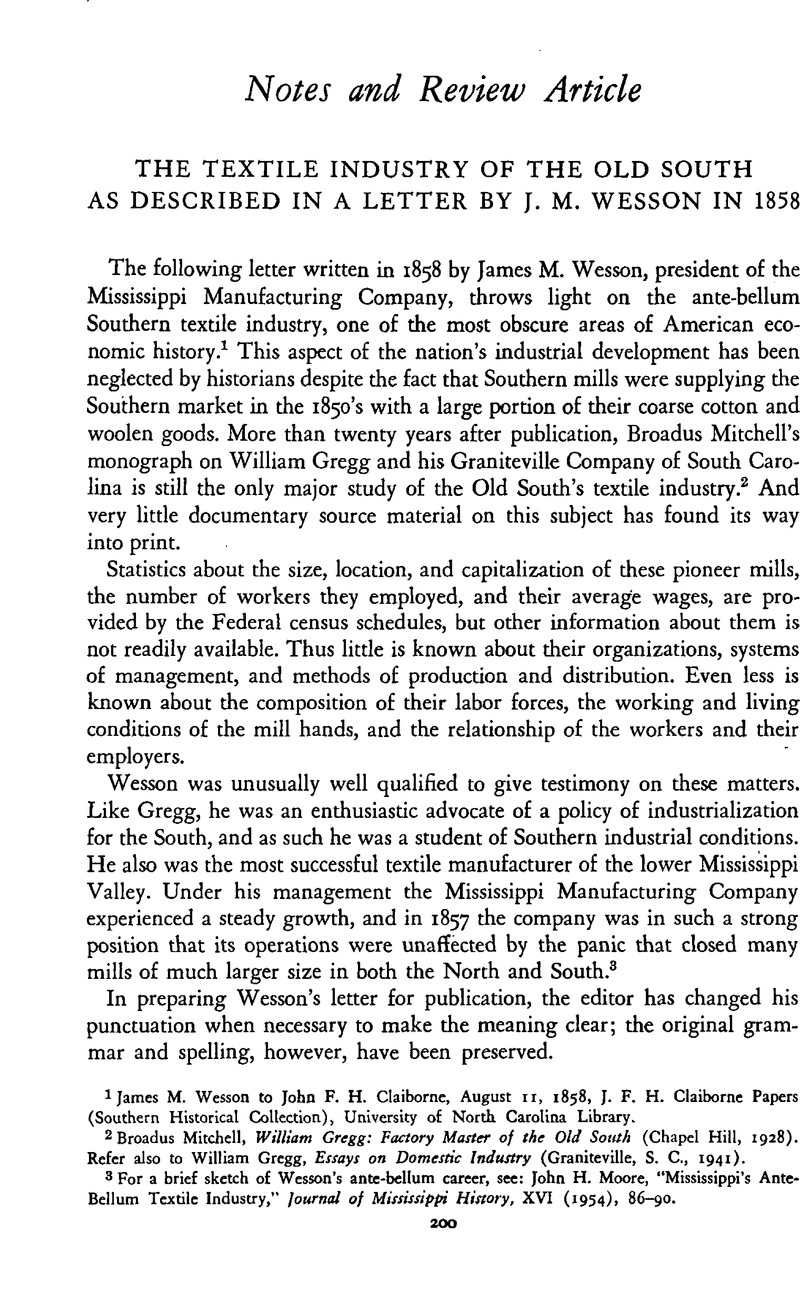No CrossRef data available.
Published online by Cambridge University Press: 03 February 2011

1 James M. Wesson to John F. H. Claiborne, August 11, 1858, J. F. H. Claiborne Papers (Southern Historical Collection), University of North Carolina Library.
2 Mitchell, Broadus, William Gregg: Factory Master of the Old South (Chapel Hill, 1928)Google Scholar. Refer also to Gregg, William, Essays on Domestic Industry (Graniteville, S. C., 1941)Google Scholar.
3 For a brief sketch of Wesson's ante-bellum career, see: Moore, John H., “Mississippi's Ante-Bellum Textile Industry,” Journal of Mississippi History, XVI (1954), 86–90Google Scholar.
4 Claiborne, John F. H., minor Mississippi Democratic politician and writer, is best known today as the author of Mississippi, As a Province, Territory and State, with Biographical Notices of Eminent Citizens (Jackson, Miss., 1880)Google Scholar.
5 Claiborne in 1858 published the prospectus of an “agricultural, scientific and literary periodical” to be called the Sea-Shore Farmer. “It will have no connection whatever with politics,” Claiborne wrote, “but will be devoted exclusively to agriculture and its kindred branches.” Like so many other projected literary efforts of the period, however, the Sea-Shore Farmer never progressed beyond the planning stage. Jackson, Mississippian, May 12, 1858Google Scholar.
6 Power for Wesson's factory was provided by an eighty-horsepower steam engine manufactured in Providence, Rhode Island, by Thurston, , Green and Company. De Bow's Review, IX (1850), 433Google Scholar.
7 Wesson encouraged wheat-growing in central Mississippi by purchasing fine seed and distributing them among the farmers. Ibid.; Natchez Courier, May 23, 1849.
8 Coleman's, Willis P. advertisement of his “Premium Undulatory Corn and Flouring Mills” was published in the Augusta (Georgia) Southern Cultivator, XIV (1856), 68Google Scholar. His mills, he claimed, had burrs ranging in diameter from fourteen to thirty-six inches, and they ground from four to seventy-five bushels of wheat per hour, depending upon the size of the mill. They cost from one to five hundred dollars each. The fourteen-inch mill had been recently awarded a premium at a New York state fair. Philips, Martin W., a prominent Southern agricultural authority of the period, recommended Coleman's mills highly, saying that they produced corn meal as fine as wheat flour. Southern Cultivator, XIV (1856), 52Google Scholar.
9 For additional information about the Columbus Manufacturing Company, refer to: Eighth Census of the United States, 1860: Manufacturing, p. 292, and the Paulding (Mississippi) Eastern Clarion, May 4, 1859.